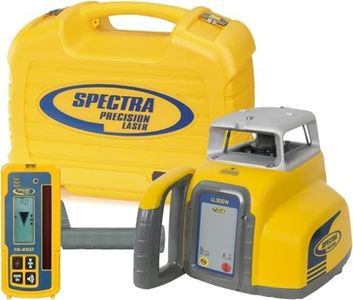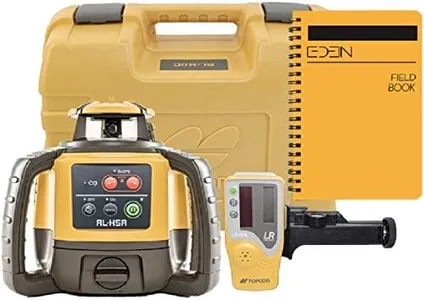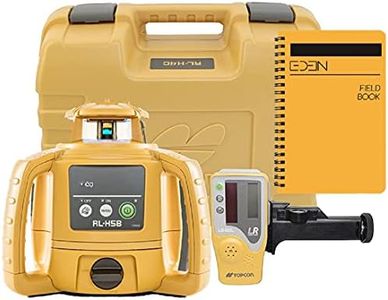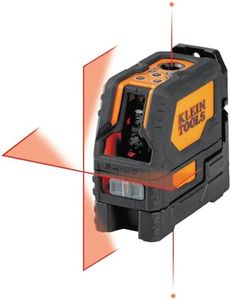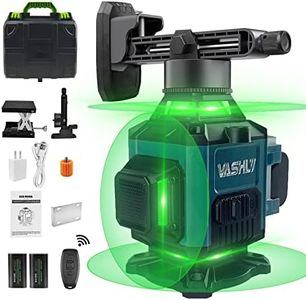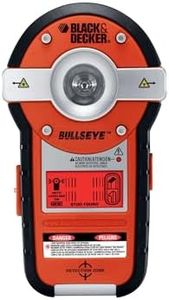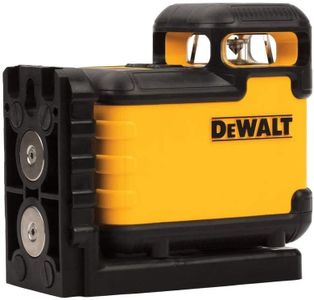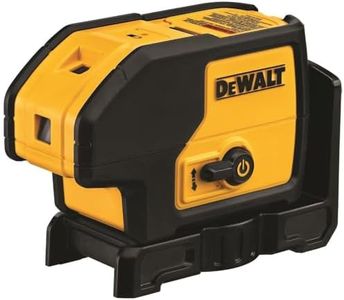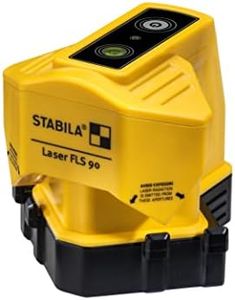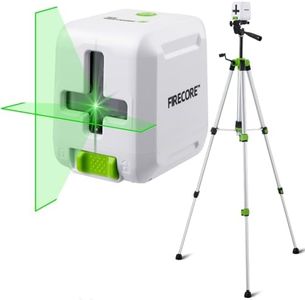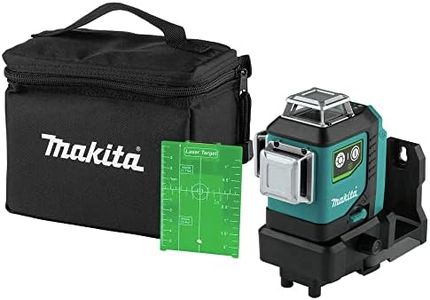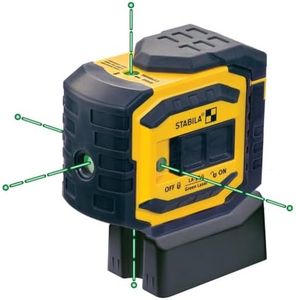We Use CookiesWe use cookies to enhance the security, performance,
functionality and for analytical and promotional activities. By continuing to browse this site you
are agreeing to our privacy policy
10 Best Laser Transits
From leading brands and best sellers available on the web.By clicking on a link to a third party's website, log data is shared with that third party.
Buying Guide for the Best Laser Transits
Laser transits, also known as laser levels or rotary laser levels, are essential tools for professionals and DIY enthusiasts who need to ensure precise horizontal, vertical, or angled alignments over long distances. Whether you're laying foundations, installing drop ceilings, or framing walls, picking the right laser transit depends on understanding how you'll use it, the working environment, and what level of accuracy you require. To find the best fit, it's important to focus on the technical aspects that directly affect usability, precision, and convenience. Here’s what to look out for and how to choose what suits you best.AccuracyAccuracy defines how close the laser’s indicated level or line is to true level over a set distance, often stated as millimeters or fractions of an inch at a particular range (like ±1.5mm at 30m). Higher accuracy is especially important for demanding tasks like foundation work or large scale construction, while less precise models may be sufficient for general household projects. As a general rule, if your work involves critical tasks or working over larger spaces, opt for the higher accuracy models. For simple or indoor leveling projects, standard accuracy may suffice.
RangeRange tells you how far the projected laser beam can be seen or detected, often measured in meters or feet. Short-range models are ideal for interior jobs like hanging cabinets, while long-range models better serve outdoor or large site projects. Some lasers offer extended range with the use of a compatible detector. Think about the size of your typical workspace—if you mostly work in small rooms, a shorter range is fine, but for large rooms or outdoor jobs, seek longer range capabilities.
Self-Leveling CapabilitySelf-leveling means the device can automatically adjust itself to create an accurate horizontal or vertical line, saving time and reducing errors. Manual leveling lasers require you to adjust the tool yourself until it’s level. Self-leveling is generally preferred as it's quick and reduces chances of human error, making it essential for precision-heavy or time-sensitive projects. Manual leveling might be acceptable for simple tasks or where speed isn’t critical.
Visibility (Laser Color)Laser lines are typically red or green. Green lasers are more visible to the human eye—especially in bright or outdoor conditions—while red lasers may be harder to see in daylight but are usually sufficient indoors. If you often work outdoors or in bright environments, green lasers are easier to spot. For indoor or low-light jobs, red lasers should work well and may also be more budget-friendly.
Battery Life and Power OptionsSince these are portable tools, battery life can make a big difference, particularly on longer jobs or remote worksites. Some models use standard replaceable batteries, others feature rechargeable packs, and a few can be plugged directly into power outlets. If your jobs last all day or happen away from power sources, longer battery life or having spare batteries on hand is a must. For occasional or short use, battery type might be less important.
Durability and Weather ResistanceLaser transits may be used in tough environments—dust, rain, or messy worksites. Look for information on how resistant the device is to water or dust (these are usually shown as IP ratings). If you work mostly outdoors or on construction sites, a more rugged, weather-resistant unit is worth considering. For clean, indoor projects, these features are less critical.
Mounting OptionsSome laser transits offer various mounting methods, like tripods, wall mounts, or magnetic bases. The flexibility of mounting options makes it easier to set up the tool exactly where you need it, increasing efficiency and accuracy. If your tasks require frequent repositioning or varying setups, choose a model with versatile mounting options. For fixed or repetitive jobs, basic mounting might suffice.
